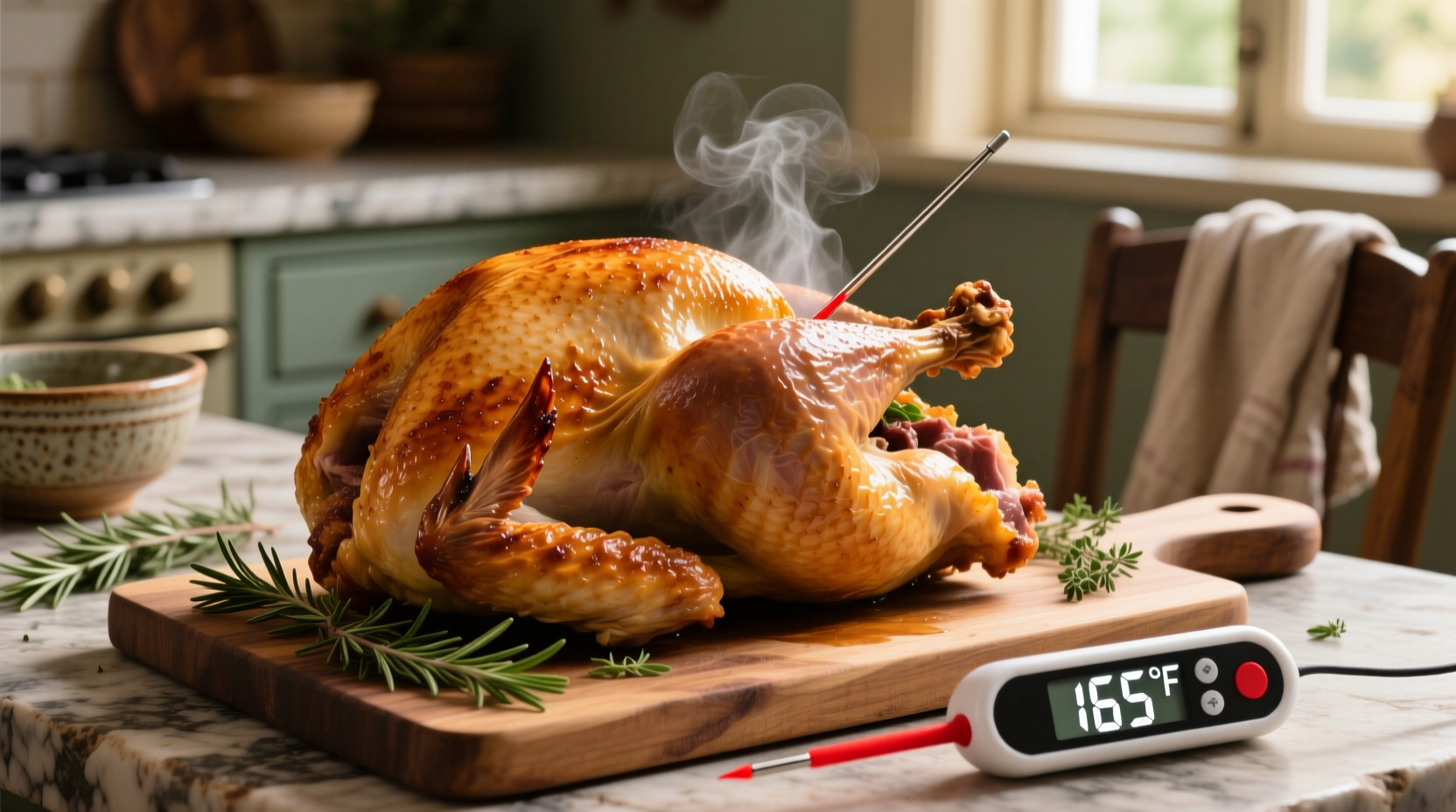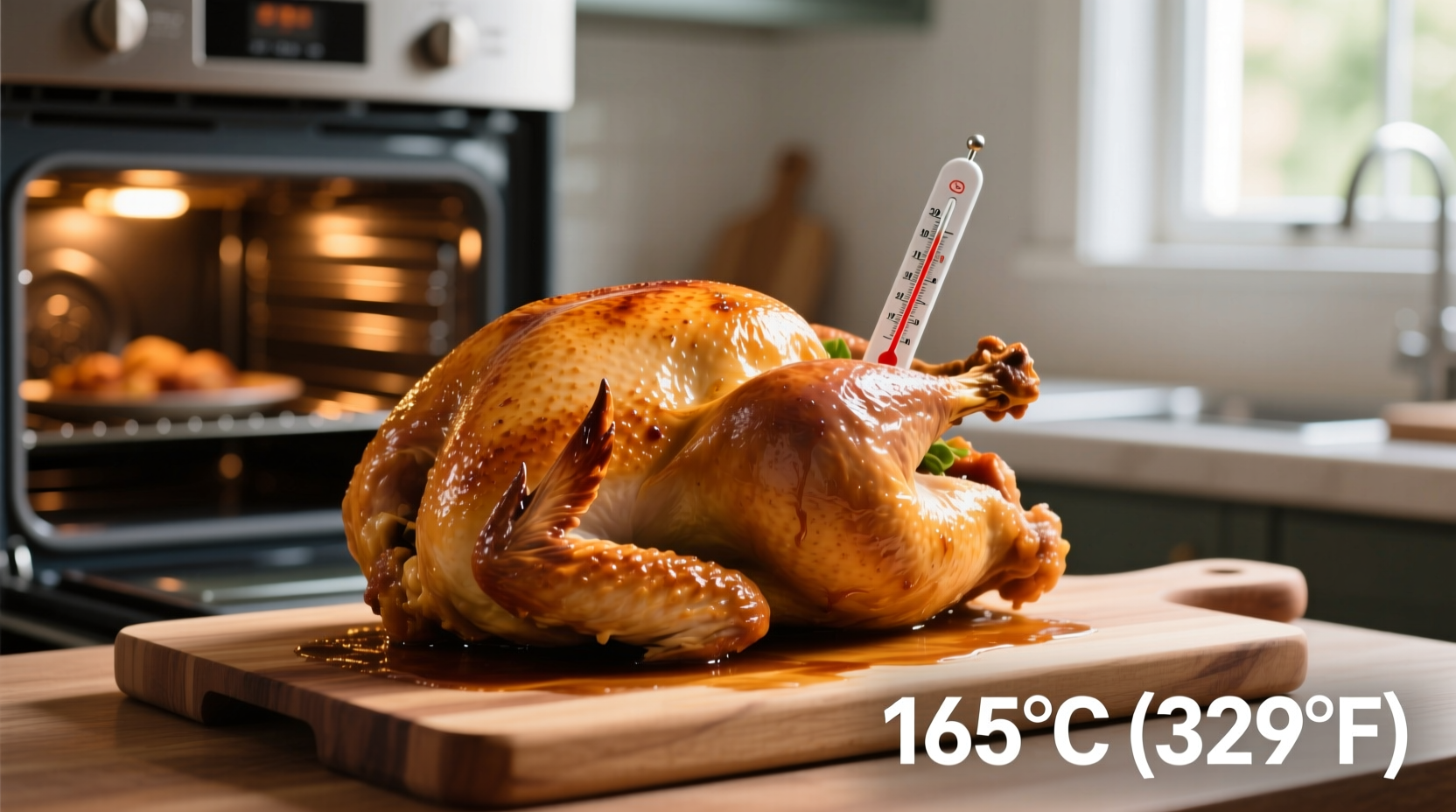The ideal oven temperature for cooking turkey is 325°F (163°C), with the internal temperature reaching 165°F (74°C) in the thickest parts of the breast and thigh. This ensures both food safety and optimal texture, preventing dryness while eliminating harmful bacteria.
Why Temperature Matters for Perfect Roast Turkey
Getting the temperature right when cooking turkey isn't just about following a recipe—it's a critical food safety requirement with significant impact on your meal's quality. Undercooked turkey can harbor dangerous bacteria like salmonella, while overcooked turkey becomes dry and unappetizing. The USDA's Food Safety and Inspection Service has established clear guidelines that balance safety with quality, making your holiday centerpiece both safe to eat and delicious.
The Science Behind Turkey Cooking Temperatures
Understanding the relationship between oven temperature and internal temperature is crucial for successful turkey preparation. When you set your oven to 325°F, you create the ideal environment for even cooking throughout the bird's dense muscle structure.
"The 325°F oven temperature allows for gradual heat penetration," explains Antonio Rodriguez, culinary expert with professional kitchen experience. "This prevents the exterior from overcooking before the interior reaches safe temperatures, while allowing collagen to break down properly for tender meat."
| Temperature Type | Recommended Value | Why It Matters |
|---|---|---|
| Oven Temperature | 325°F (163°C) | Ensures even cooking without burning exterior |
| Internal Breast Temp | 165°F (74°C) | Eliminates harmful bacteria while preserving moisture |
| Internal Thigh Temp | 175°F (79°C) | Denser muscle requires slightly higher temperature |
| Resting Temperature | 150-155°F (66-68°C) | Carryover cooking continues to 165°F during rest |
How Turkey Cooking Recommendations Have Evolved
Historical cooking guidelines for turkey have changed significantly as food science has advanced. In the mid-20th century, many recipes recommended cooking turkeys at much higher temperatures (up to 400°F) for shorter periods, which often resulted in dry, overcooked birds.
The USDA's current recommendation of 165°F internal temperature represents decades of research into food safety. According to the USDA Food Safety and Inspection Service, this temperature was established after extensive testing confirmed it effectively destroys harmful pathogens while maintaining quality.
Step-by-Step Temperature Guide for Perfect Turkey
Preparation Phase
Before you even turn on your oven, proper preparation sets the stage for temperature success. Remove your turkey from the refrigerator 1-2 hours before cooking to bring it closer to room temperature. This reduces the temperature gradient, allowing for more even cooking. Pat the skin dry thoroughly—moisture on the surface creates steam, which prevents proper browning.
Cooking Process
Preheat your oven to 325°F (163°C) with the rack positioned in the lower third. Place the turkey breast-side up on a rack in a roasting pan. For accurate monitoring, insert an oven-safe thermometer into the thickest part of the breast, avoiding bone.
Cooking time varies based on size:
- 8-12 pound turkey: 2¾-3 hours
- 12-14 pound turkey: 3-3¾ hours
- 14-18 pound turkey: 3¾-4¼ hours
- 18-20 pound turkey: 4¼-4½ hours
- 20-24 pound turkey: 4½-5 hours
Temperature Monitoring
Approximately 45 minutes before the expected completion time, begin checking the internal temperature using an instant-read thermometer. Insert it into three critical areas:
- The innermost part of the breast
- The innermost part of the thigh
- The thickest part of the wing
For accurate readings, ensure the thermometer tip isn't touching bone, which conducts heat differently than meat. The USDA recommends 165°F (74°C) as the minimum safe internal temperature for poultry.

Special Considerations for Different Cooking Scenarios
Certain cooking situations require temperature adjustments. When cooking a stuffed turkey, increase the recommended internal temperature to 180°F (82°C) in the center of the stuffing to ensure food safety. Convection ovens typically require reducing the temperature by 25°F while maintaining the same cooking time.
At high altitudes (above 3,000 feet), water boils at lower temperatures, which affects cooking times. You may need to increase cooking time by 5-10% while maintaining the same oven temperature. For brined turkeys, which contain more moisture, monitor temperature carefully as they may cook slightly faster.
Avoiding Common Temperature Mistakes
Many home cooks make critical errors that compromise both safety and quality:
- Not using a thermometer - Visual cues alone cannot determine doneness
- Checking temperature too frequently - Opening the oven door lowers temperature significantly
- Not allowing for carryover cooking - Temperature rises 5-10°F during resting
- Incorrect thermometer placement - Measuring near bone or in thin areas
"The most common mistake I see is people pulling the turkey out too early because they're worried about dryness," notes Rodriguez. "But undercooked turkey is unsafe. It's better to slightly overcook than risk foodborne illness."
Resting: The Critical Final Step
After removing your turkey from the oven, let it rest for 20-40 minutes (depending on size) before carving. During this time, the internal temperature will continue to rise 5-10°F (carryover cooking), and the juices will redistribute throughout the meat. Cover loosely with foil to maintain warmth without trapping steam that would soften the crispy skin.
Verifying Your Results
To confirm your turkey has reached safe temperatures, use the "juice test" as a secondary verification method. Piercing the thickest part of the thigh should produce clear juices, not pink. However, this method alone isn't sufficient for food safety—always verify with a thermometer.











 浙公网安备
33010002000092号
浙公网安备
33010002000092号 浙B2-20120091-4
浙B2-20120091-4